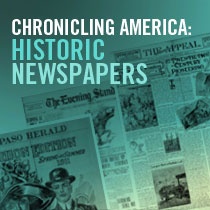

Here are some common features you should try to find before citing electronic sources in MLA style. Not every web page will provide all of the following information. However, collect as much of the following information as possible:
Use the following format:
Author. "Title." Title of container (self contained if book), Other contributors (translators or editors), Version (edition), Number (vol. and/or no.), Publisher, Publication Date, Location (pages, paragraphs and/or URL, DOI or permalink). 2nd container’s title, Other contributors, Version, Number, Publisher, Publication date, Location, Date of Access (if applicable).
Taken from The Purdue OWL
"BASIC BOOK FORMAT
The author’s name or a book with a single author's name appears in last name, first name format. The basic form for a book citation is:
Last Name, First Name. Title of Book. City of Publication, Publisher, Publication Date.
*Note: the City of Publication should only be used if the book was published before 1900, if the publisher has offices in more than one country, or if the publisher is unknown in North America" (Purdue OWL).
EXAMPLE
Gottfried, Ted. Nazi Germany: The Face of Tyranny. Twenty-First Century Books, 2000.
"For an individual page on a Web site, list the author or alias if known, followed by an indication of the specific page or article being referenced. Usually, the title of the page or article appears in a header at the top of the page. Follow this with the information covered above for entire Web sites. If the publisher is the same as the website name, only list it once" (Purdue OWL).
EXAMPLE
“Antisemitism Explained.” United State Holocaust Memorial Museum, https://www.ushmm.org/antisemitism/what-is-antisemitism/explained. Accessed 10 January 2023.
"Provide the artist's name, the title of the artwork in italics, and the date of composition. Finally, provide the name of the institution that houses the artwork followed by the location of the institution (if the location is not listed in the name of the institution, e.g. The Art Institute of Chicago).
If you viewed the artwork on the museum's website, treat the name of the website as the container and include the website's publisher and the URL at the end of the citation. Omit publisher information if it is the same as the name of the website. Note the period after the date below, rather than the comma: this is because the date refers to the painting's original creation, rather than to its publication on the website. Thus, MLA format considers it an 'optional element'" (Purdue OWL).
*Note: For images without titles, create a descriptive title in plain text – no italics, no quotes. Capitalize only the first word and any proper nouns.
EXAMPLE
Bałuk, Stefan. A group of insurgents from the „Pięść” Battalion standing on Karolkowa Street. 1944. Warsaw Rising Musuem, https://www.1944.pl/en/photo-library/collection/stefan-baluk-kubus-starba,126/7709.html.

"Video and audio sources need to be documented using the same basic guidelines for citing print sources in MLA style. Include as much descriptive information as necessary to help readers understand the type and nature of the source you are citing. If the author’s name is the same as the uploader, only cite the author once. If the author is different from the uploader, cite the author’s name before the title" (Purdue OWL).
EXAMPLE
Aigner, Lesley. "Holocaust Survivor Leslie Aigner Oral History." YouTube, uploaded by The National WWII Museum, 29 August 2019, https://www.youtube.com/watch?v=wCZKep26LEQ.
"Any source information that you provide in-text must correspond to the source information on the Works Cited page. More specifically, whatever signal word or phrase you provide to your readers in the text must be the first thing that appears on the left-hand margin of the corresponding entry on the Works Cited page" (Purdue OWL).
Print sources must include the page number. Non-print (most web sources) do not need a page or paragraph number.
EXAMPLES
A Hungarian Holocaust survivor recounts, "This came to end after '39. My father's business license was taken away," (Aigner).
OR
Leslie Aigner recounts, "This came to end after '39. My father's business license was taken away."
Aigner, Lesley. "Holocaust Survivor Leslie Aigner Oral History." YouTube, uploaded by The National WWII Museum, 29 August 2019, https://www.youtube.com/watch?v=wCZKep26LEQ.
"How did Germany get to the point where individual Germans had to say yes or no to the Nazis, or turn their backs on the slaughter," (Gottfried 22).
OR
Gottfried investigates the question, "How did Germany get to the point where individual Germans had to say yes or no to the Nazis, or turn their backs on the slaughter," (22).
Gottfried, Ted. Nazi Germany: The Face of Tyranny. Twenty-First Century Books, 2000.
The Purdue OWL Family of Sites. The Writing Lab and OWL at Purdue and Purdue U, 2008, owl.english.purdue.edu/owl. Accessed 10 January 2023.


Director Claude Lanzmann spent 11 years on this sprawling documentary about the Holocaust, conducting his own interviews and refusing to use a single frame of archival footage. Dividing Holocaust witnesses into three categories -- survivors, bystanders and perpetrators -- Lanzmann presents testimonies from survivors of the Chelmno concentration camp, an Auschwitz escapee and witnesses of the Warsaw Ghetto Uprising, as well as a chilling report of gas chambers from an SS officer at Treblinka.

The story of the WWII through the ten most pivotal turning points in the conflict. Gripping story-telling, illustrated with restored archive and supported by a global cast of stellar historians bring this crucially important era in history to life.